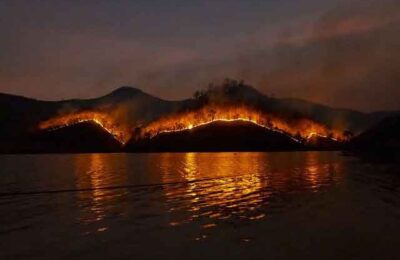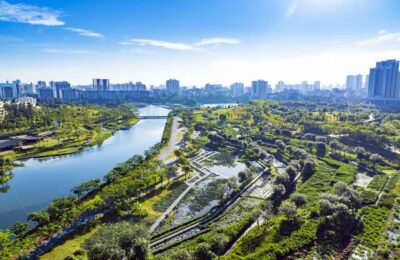Globally, climate change is taking a toll on the environment with adverse events. Intense heatwaves, melting of glaciers, habitat loss, frequent flooding and sea-level rise are some of the climate change effects affecting the planet.
1) Intense Heatwaves
Weather is becoming more severe, and the world is heating up due to climate change. Heatwaves are happening more frequently than they used to in several cities around the world. Summers temperatures are going record high in many urban regions.
According to Climate Change Science Report, the Global annual temperature has already raised to over 0.7oC during the1986-2016. And at the end of the 21st century, the global surface temperature has great potential to surpass 1.5oC.
Extreme heat can raise the probability of other kinds of disasters. It can worsen drought and hot dry situations can provoke wildfires. In urban areas, buildings, roads, and other infrastructure carry higher temperatures than the surrounding air temperature.
Cities are warmer
On a summer day with a temperature of 33oC, traditional roofing materials may go high as 15 oC higher than the air temperature. The heat island effect is more intense during the day due to the sun’s radiation, however, the gradual release of heat during the night more likely keeps the cities much warmer than the surrounding spaces.
Why cities are hotter than the countryside?
Cities contain more transportation, machinery and air conditioning that emits hot air into the streets. The lack of green spaces that normally helps to cool the urban environment is not sufficient to cool the air and shade the grey infrastructure present in cities. Compact urban structures such as tall buildings in New York and Hong Kong can further aggravate the heat.
The temperature rise has effects on public health and heat-related deaths. It also causes a major effect on habitats and the economy. The number of people affected by heatwaves has increased by almost 125 million from 2000-2016. And more than 166,000 have died due to heatwaves between 1998-2017.


Compact urban areas like New York and Hong Kong can cause heat island effect.
2) Arctics are likely to be Ice-free
The Arctic is getting warmer more than two times rapidly than the rest of the earth, showing that the average temperatures have raised by almost 2 to 3oC since the preindustrial times of 1oC for the entire world.
Sea ice is shrinking extensively. During an extreme climate scenario, the sea ice extent is likely to decline to 1 million square kilometres.
Research has revealed that warm temperature in the Arctic is connected to climate changes in atmospheric circulation patterns in the midlatitudes.
Loss of summer ice
Even by reducing carbon emissions, studies have revealed that the loss of summer sea ice in the Arctic is still highly probable before 2050. If carbon emissions are released to a greater extent, ice-free Arctic is likely in the winter, which in turn could be destructive for wildlife species like a polar bears.
In higher emission events, ice-free summer could appear each year, whereas, in lower emission scenarios, ice-free summer could be occasional. Research reveals that reducing carbon emissions can avoid adverse effects on the Arctic.
How the Arctic is significant for the climate and weather pattern around the world?
The bright white feature of the Arctic Sea reflects solar radiation into the atmosphere and insulates the sea located down. The temperature difference existing between the cold Arctic and the hot tropics stimulates winds and ocean currents and helps regulate the global weather conditions. So, when Arctic ice vanishes, the oceans could capture more sunlight and heat up, resulting in a warmer world.
At the end of this century, the decline of ice in the sea is likely to see unpredictable climate systems around the globe.
Studies are predicting that common animals might disappear, and the arctic will likely get warmer and rainier in the future. It has the potential to disrupt the sea by causing sea-level rise, cause loss of habitats, and experience warmer summers and colder winters.


Decline of ice can be destructive for polar bears
3) Sea - Level could rise over a meter by 2100
Global sea-level rise is a significant effect of climate change. Since 1880, average sea levels have risen above 8 inches with 3 inches recorded over the past 25 years alone. Each year, the sea rises another 0.13 inches.
Sea level rise varies depending on different parts of the world to sinking level of the land in the local area. Local land elevation, tides and winds affect the coastal population.
Three main factors influence sea-level rise:
Enhanced Thermal Expansion: It occurs when the water heats up and expands. Around half of the sea-level rise during the last 25 years is linked to warmer oceans taking up more area.
Imbalance in Melting Glaciers: Normally, mountain glaciers melt a bit during summer and balances the melting during winter. However, the higher-than-normal summer melting due to global warming has caused an imbalance between runoff and ocean evaporation, inducing sea-level to rise.
The decline of Greenland and Antarctica’s Ice Sheets: Rise in heat is causing ice sheets located in Greenland and Antarctica (West Antarctica and East Antarctica) to melt faster than normal. Researchers consider that ice melting from the top and seawater from down is flowing below Greenland’s ice sheets, thereby lubricating the ice streams and inducing them to shift further into the sea.
Some of the consequences of sea-level rise are wetland flooding, coastal erosion, soil contamination with salt, and decline of plant and animal species with main harm on coastal habitats.
The rise in sea level increases the intensity of hurricanes and typhoons, contributes to high precipitation levels, and produces strong storm surges. Sea level rise influences high tides and storm-surge flooding. Millions of people are vulnerable to heavy flooding, forcing them to move from living in low-lying regions.
Major cities like Jakarta, Venice, Rotterdam are sinking at a greater level and could likely disappear by 2100.

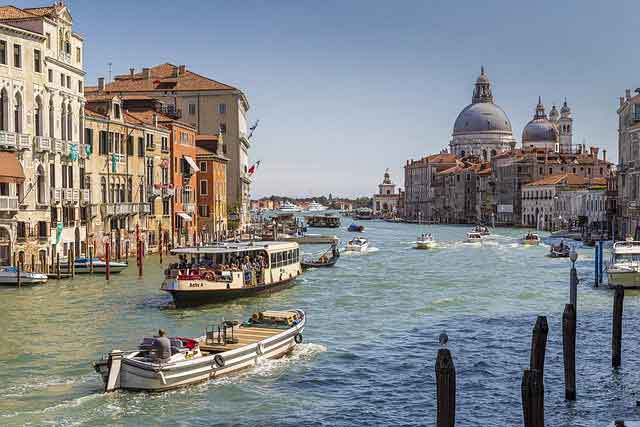
Jakarta and Venice are at high risk of sea-level rise and could disappear by 2100.
4) Ocean and Marine Species could decline
Global warming and climate change is affecting marine species and threatening the existence of many fisheries and coral reefs.
Oceans are getting warmer
Changes in water temperature can have a huge impact on the ocean environment where fish and other coastal species live. Due to the ongoing climate change effect which causes the ocean to become warmer, the marine population could move to cooler areas.
Acidic levels in the ocean are increasing
Due to the rise in carbon dioxide levels from human activities like burning fossil fuels, the acidity levels of seawater are increasing. Carbon dioxide dissolves in water, altering the chemistry of seawater by decreasing the pH levels that in turn makes the seawater further acidic. More shellfish could die when the higher acidity levels contribute to thinner shells, making it easy for predators to eat.
Corals are sensitive to a rise in seawater acidity
Due to increased acidity, it is hard for corals to generate and maintain their skeletal structures for their support and protection. Corals support the main fish spawning habitat and help thousands of marine lives. With global action on climate change, coral cover is set to decline which could affect the lives of many coastal species.
Powerful storms and heavy rains can pollute sea waters
When the ocean gets warmer, more water evaporates into the air. This leads to heavier rainstorms, that further increases runoff and flooding, worsening water quality as pollutants on the surface flow into water bodies.
Few coastal areas are already seeing a lack of marine life in “dead zones” where water is depleted of water in places like the Gulf of Mexico due to pollution from agricultural fertilizers.
Human activities contribute to the loss of coastal habitats
Unsustainable fishing, plastic pollution into the sea, and garbage released into the sea by industries around the globe are some of the main human activities contributing to the decline of fish species.


Coral reefs and other marine species are affected by seawater acidity and pollution.
5) Freshwater could become scarce
Freshwater is vital for humans, mainly for drinking and farming. However, freshwater will become scarce in the future, partially due to climate change.
Only 2% of water available on earth is freshwater
About 98% of the water available on earth is salty, and the remaining 2% is fresh. The 2% freshwater has 70% in snow and ice, about 30% in groundwater, lower than 0.5% is surface water (like streams, rivers, and lakes, ponds) and lower than 0.05% is in the atmosphere.
Climate change impairs freshwater
On a global scale, the melting of ice into the sea changes freshwater salty, but it only has a limited impact on water supply.
An increase in the amount of water that the atmosphere can hold can lead to heavier rains. Although higher precipitation levels are good to improve freshwater resources, heavier rains make it harder to store before it combines into the sea. Warmer air also makes quicker evaporation of water from melted ice leading to heavy rainfall.
Less water availability affects dry regions
Freshwater availability in dry regions is concerned with water scarcity in the future. The Mediterranean and southern Africa are prone to the risk of reduced precipitation and increased evaporation. IPCC report on climate change adaptation predicts that about one billion people living in dry areas might be exposed to increasing water scarcity.
Global population rise requires more freshwater supply
Increasing global population refers to an increase in freshwater needs and demands. This requires saving freshwater sources, enhancing water storage facilities, and limiting the rise of global temperature.


Lakes and rivers are prone to high evaporation due to temperature rise.
6) Variations in Precipitation Increases Flooding and Droughts
According to present climate models, the temperature rise will aggravate the Earth’s water cycle by increasing evaporation. When evaporation increases, common and heavy storms increase in dry regions. The areas with high precipitation will have common flood risk, while regions situated away from storms are exposed to less rainfall that in turn experience drought conditions.
How warm air contributes to intense precipitation?
Warm air can carry more water moisture. For each degree of temperature increase, the air’s capacity of water moisture rises by 7%. An atmosphere that holds more moisture in the air can produce high precipitation events.
Urban areas can face a common risk of flooding
The main threat cities can face due to change in precipitation levels is the high risk of flooding which could become much more common. Urban areas that normally have hard paving surfaces can force water to run off and combine with sewers before it could be stored and used.
Increase in landslides
Intense precipitation also leads to the risk of landslides. When heavy rainfall increases the water table and saturates the ground, the slopes lose their stability and causes landslides.
Impairs ecosystems
Stormwater runoff often contains pollutants such as heavy metals, pesticides, nitrogen, etc. which can combine into lakes and streams, destroying aquatic lives and reducing water quality for use.


Areas will less rainfall are vulnerable to drought conditions.
7) Heavy storms and Powerful Hurricanes could become extreme
Warmer ocean temperatures and sea-level rise is projected to aggravate the intensity of hurricanes and their impacts. Powerful hurricanes will be more expensive in terms of damages and causalities without measures to make coastal regions more resilient.
Climate change influences are:
Warmer sea surface temperature could aggravate tropical storm wind speeds, possibly providing more damage if they cause landfall. With 2oC warming scenario, the hurricane wind speeds rise by nearly 10%, and warm sea temperature also causes hurricanes to have wetter conditions with 10-15% more precipitation.
Sea-level rise can cause future coastal storms, involving hurricanes and more damages. In low-and-moderate scenarios, the sea level is projected to increase by 1-4 feet during this century, which will intensify coastal storm surges. During Hurricane Sandy, coastal flooding causes most of the projected $65 billion in damages in New York, New Jersey, and Connecticut in 2012.
Threats involved with hurricanes
Hurricanes damage infrastructure, buildings, energy systems, water and sewer systems, transportation, and flood management infrastructure.
Stronger hurricanes increase the threat to human lives and public health. Hurricane Katrina caused about 1,833 deaths.
Water supply disruptions and power system failure can cause risk for waterborne diseases, environmental contaminants, and mosquito-borne diseases.
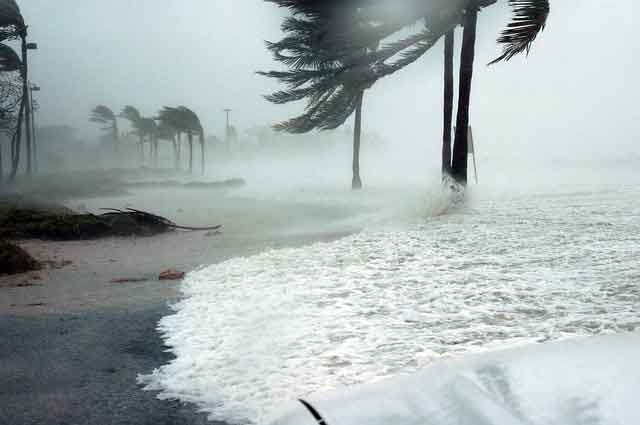

Hurricanes and coastal storms are intensified by warm ocean temperatures.
8) Changes in Soil Moisture Conditions
Climate change influences how soil functions and perform. Soil health could be affected by climate change by limiting the amount of organic matter in the soil and damaging the structure of the soil. This could enhance its vulnerability to soil erosion and degradation.
Soil is an important carbon sink on the planet, being the second largest after the ocean. So, it is important to improve the health of the soil to protect the planet and ecosystem.
Agricultural land could become unusable
Climate change could cause several agricultural areas unusable or less productive.
In agriculture, climate change will affect crop production when changes in air temperature and rainfall influence the ability of crops to attain maturity and their potential harvest.
Harsh weather events affect soil moisture
Extreme events such as heatwaves and droughts can change soil moisture. In many parts of the world, the soil is prone to become extremely drier or wetter when the world warms up. Drier soil conditions could be seen in the southwestern US, Mediterranean and southern Africa, mainly due to warm temperatures and regional changes in precipitation level.
Soil erosion can also be driven by climate events such as storms, rain, droughts, and heatwaves. Sea-level rise could alter soil in coastal areas or include contaminants like salt from the sea.
Less precipitation and a temperature rise will enable desertification and loss of farm production in several areas. While common droughts could destroy the main living soil ecosystems required to grow healthy crops.
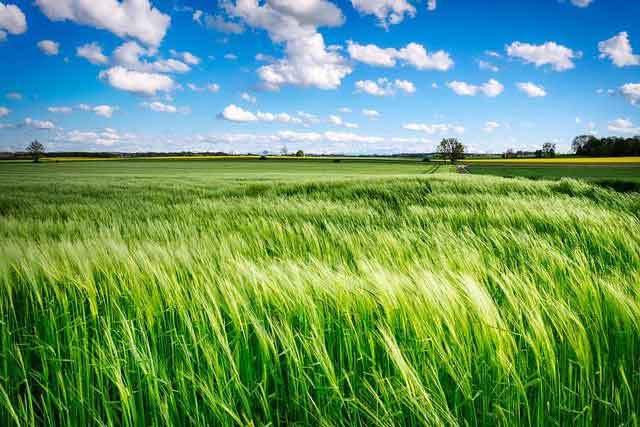

Less precipitation could create drier soils and affect farm productions.
9) Changes in Natural Habitat Life Cycle
Natural habits on land and in the sea are changing, causing them to uninhabitable for some species while making others migrate. Few ecosystems are at risk of collapse.
Habitats require the appropriate temperature, freshwater, food, and areas. However, climate change has altered several elements, making it risky for the habitat’s survival and putting natural resources in danger.
Several species follow the signal on when to move, flower, nest, or mate from seasonal changes in temperature, precipitation, and daylight. But climate change is confusing those cues and forcing habitats to change their life cycle and events.
Food availability for species changes when the sources like insects and plants are hatched or bloomed too early or too slow, making it harder for animals to find food sources.
Warmer temperatures and a rise in fuels from dead trees have contributed to wildfires. Severe droughts can destroy plans on which wildlife rely for food and shelter, and strips them of water sources. Heavier floods increase erosion, lessening water quality and deteriorating aquatic habitat.
When current places become less suitable for species, they cannot migrate fast enough to adapt to climate change.
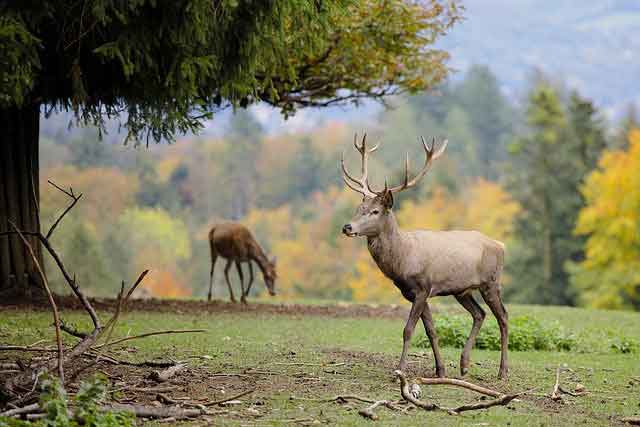
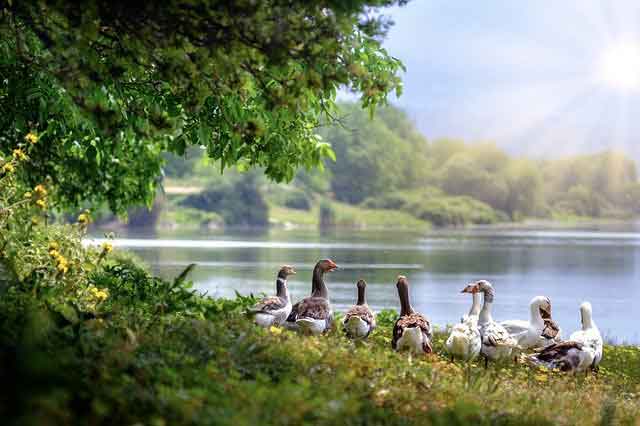
Climate change has altered natural signals confusing the life cycle of natural habitats.
10) Human Health at Risk
Climate change influences human health and wellbeing through adverse weather events and wildfires, reduced air quality, and diseases spread by insects, food, and water.
Sea-level rise, droughts, storm surges, and flooding affects human health and destroys their infrastructures.
Heatwaves and Extreme Temperature
Warm temperature causes heat strokes, heat exhaustion, hyperthermia, dehydration, and severe cases can lead to death. This could worsen other pre-existing health conditions like hypertension and respiratory diseases. 2003 European heatwave caused 70,000 premature deaths.
Impact of disasters
Floods contaminate water sources and increase water-borne diseases. Water scarcity causes famine and drought.
Warm temperature and change in precipitation lessen the production of staple foods in many developing regions, increasing the risk of malnutrition and undernutrition.
Coastal communities are vulnerable to natural disasters and sea-level rise which could destroy their home cost their life and force them to migrate.
People at high risk
People living in small islands, coastal regions, megacities, mountains, and polar areas are mainly vulnerable to climate change.
Poorer countries, elderly people and people with pre-existing health conditions are prone to health effects from climate change.
Developing countries with poor infrastructural facilities and insufficient health facilities are also vulnerable.


People living near the sea are highly affected by sea-level rise, powerful hurricanes, storms and coastal flooding.
Limiting global temperature rise to not more than 1.5oC can reduce the impact of climate change.
